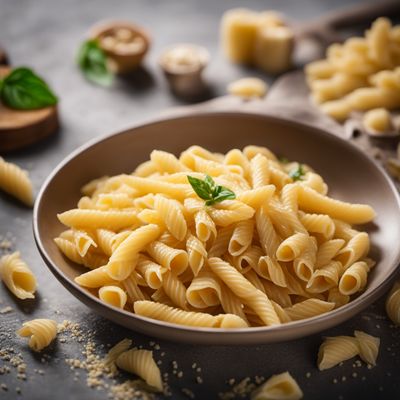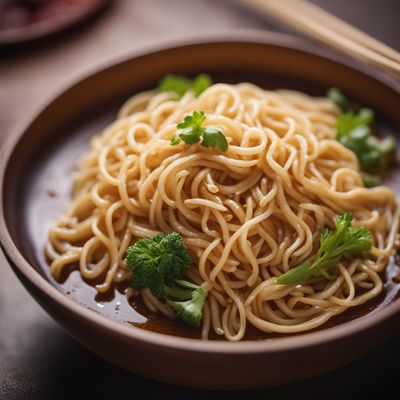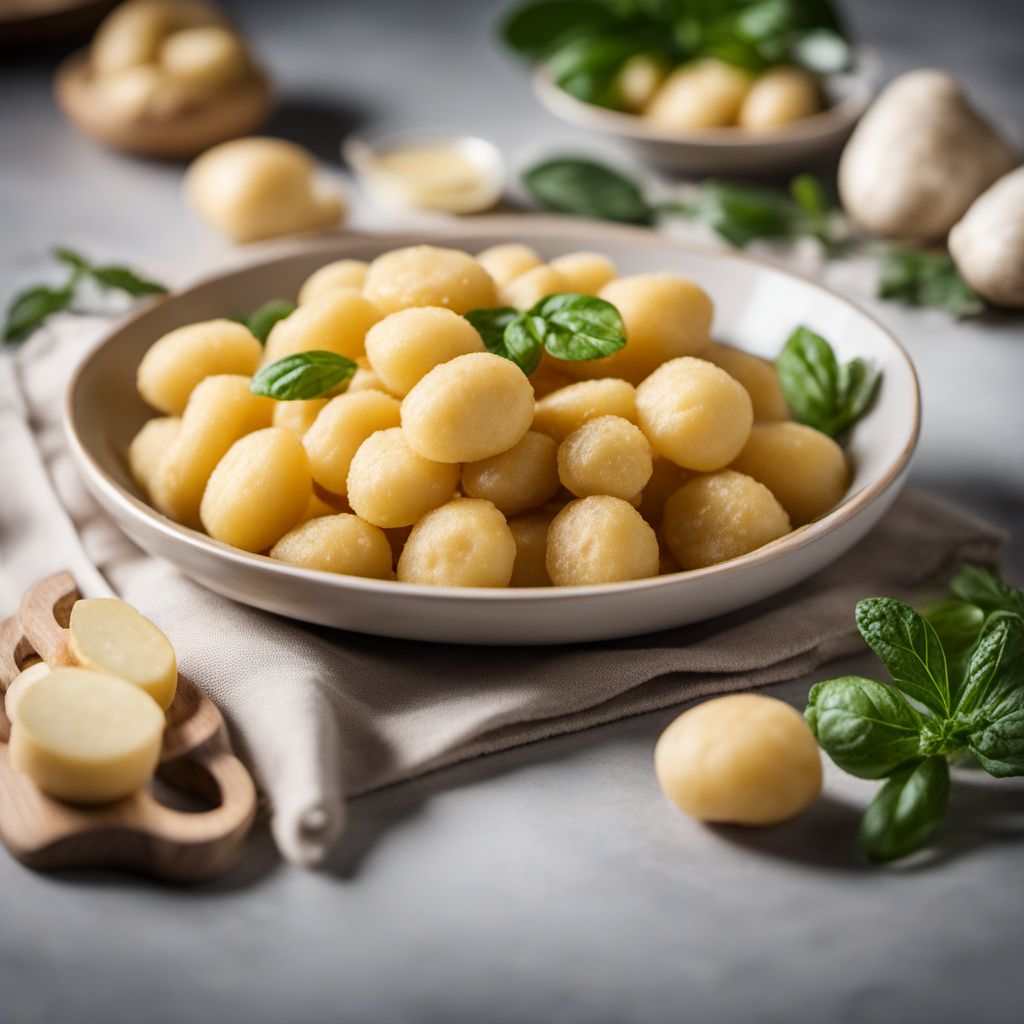
Ingredient
Gnocchi
"Pillowy Potato Dumplings: Exploring the Delights of Gnocchi"
Gnocchi are small, soft dumplings that are typically made by combining cooked potatoes with flour and sometimes eggs. The dough is rolled into long ropes, cut into bite-sized pieces, and then shaped by pressing them against a fork or a gnocchi board to create ridges that help sauce cling to them. The resulting gnocchi have a tender, delicate texture that melts in your mouth. They have a mild, slightly earthy taste with a hint of sweetness from the potatoes. Gnocchi come in various shapes and sizes, but the most common are the classic oval-shaped ones. They are often boiled until they float to the surface, indicating that they are cooked and ready to be enjoyed.
Origins and history
Gnocchi have their origins in Italy, particularly in the northern regions of Lombardy, Piedmont, and Friuli-Venezia Giulia. The word "gnocchi" is derived from the Italian word "nocchio," meaning a knot in wood or a knuckle. It is believed that gnocchi were introduced to Italy by the Romans, who brought potatoes from the New World. Over time, gnocchi became a popular dish throughout Italy, with each region adding its own unique twist to the recipe. Today, gnocchi is enjoyed not only in Italy but also in many other parts of the world.
Nutritional information
Gnocchi are a good source of carbohydrates and provide energy for the body. They also contain some dietary fiber, vitamins, and minerals. A 100-gram serving of gnocchi typically contains around 130-150 calories, depending on the recipe and cooking method.
Allergens
Gnocchi may contain wheat flour and eggs, making them unsuitable for individuals with gluten or egg allergies.
How to select
When selecting gnocchi, look for packages that are well-sealed and free from any signs of moisture or mold. Freshly made gnocchi should be firm and not sticky. If purchasing from a deli or restaurant, choose ones that are made in-house or from reputable sources.
Storage recommendations
Store packaged gnocchi in a cool, dry place, away from direct sunlight. Once opened, any unused gnocchi should be refrigerated and consumed within a few days. Homemade gnocchi can be frozen on a baking sheet and then transferred to a freezer bag for long-term storage. They can be cooked directly from frozen.
How to produce
Amateur cooks can make gnocchi at home by boiling and mashing potatoes, combining them with flour and eggs, and shaping the dough into small dumplings. There are numerous recipes and tutorials available online that provide step-by-step instructions for making homemade gnocchi.
Preparation tips
To cook gnocchi, bring a large pot of salted water to a boil and carefully drop the gnocchi in. Cook until they float to the surface, usually within 2-3 minutes. Drain the cooked gnocchi and toss them in your favorite sauce or sauté them in butter for a crispy exterior. Gnocchi can be served with a variety of sauces, such as tomato, pesto, or creamy cheese. For added flavor, consider pan-frying the cooked gnocchi to achieve a golden crust. To enhance the texture, some chefs recommend adding a small amount of semolina flour to the dough.
Substitutions
If you're looking for a gluten-free alternative to gnocchi, you can try using cooked and mashed sweet potatoes or cauliflower as a substitute. These alternatives will provide a similar texture and can be used in the same way as traditional potato-based gnocchi.
Culinary uses
Gnocchi are incredibly versatile and can be used in a variety of dishes. They are commonly served as a main course, tossed in a flavorful sauce such as tomato, pesto, or cream-based sauces. Gnocchi can also be added to soups or stews to add heartiness and texture. Additionally, they can be pan-fried or baked for a crispy exterior, adding a delightful contrast to the soft interior.
Availability
Gnocchi is commonly available in Italian specialty stores, supermarkets, and gourmet food markets. It is also widely available in restaurants and can be found on the menus of Italian and European cuisine establishments.
More ingredients from this category
Recipes using Gnocchi » Browse all
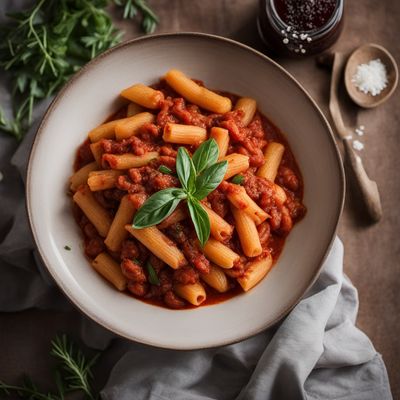
Gnocchi di Pasta Lievitata con Ragù di Coniglio
Fluffy Pasta Gnocchi with Rabbit Ragù
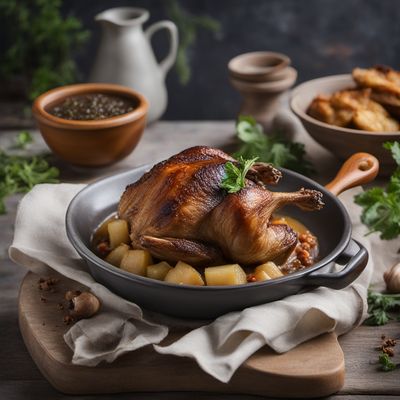
Slovak-style Duck Confit
Savory Slovak Delight: Duck Confit with a Local Twist

Homemade Potato Gnocchi with Goose Ragu
Savory Delight: Homemade Potato Gnocchi with Rich Goose Ragu
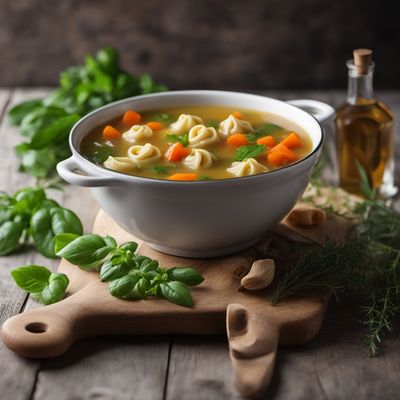
Homemade Tortellini in Brodo
Savory Delights: Handcrafted Tortellini in Flavorful Broth

Homemade Cavatelli with Pork Sugo
Savory Delight: Homemade Cavatelli with Slow-Cooked Pork Sugo

Moldovan-style Leavened Pasta Gnocchi with Rabbit Ragù
Fluffy Pasta Delight: Moldovan Gnocchi with Savory Rabbit Ragù

Tržiške bržole with Potato Gnocchi
Savory Slovenian Beef Rolls with Potato Gnocchi

Homemade Tomato and Mozzarella Gnocchi Bake
Savory Tomato and Mozzarella Gnocchi Delight

Homemade Gnocchi with Rabbit Ragu
Savory Delight: Homemade Gnocchi with Slow-Cooked Rabbit Ragu

Chugchucaras with a Twist
Andean Delight: A Modern Twist on Chugchucaras

Homemade Potato Gnocchi with Slow-Cooked Beef
Savory Delight: Tender Potato Gnocchi with Slow-Cooked Beef

Bavarian Katsudon
Bavarian Schnitzel Rice Bowl
